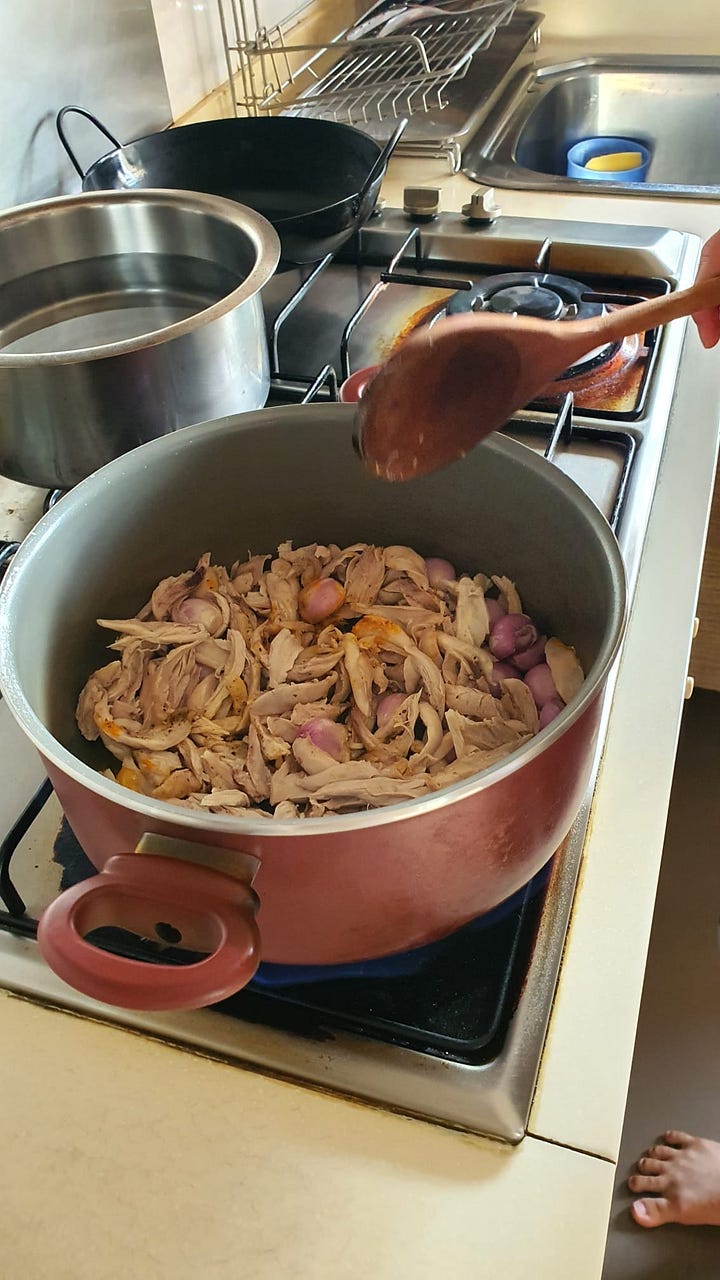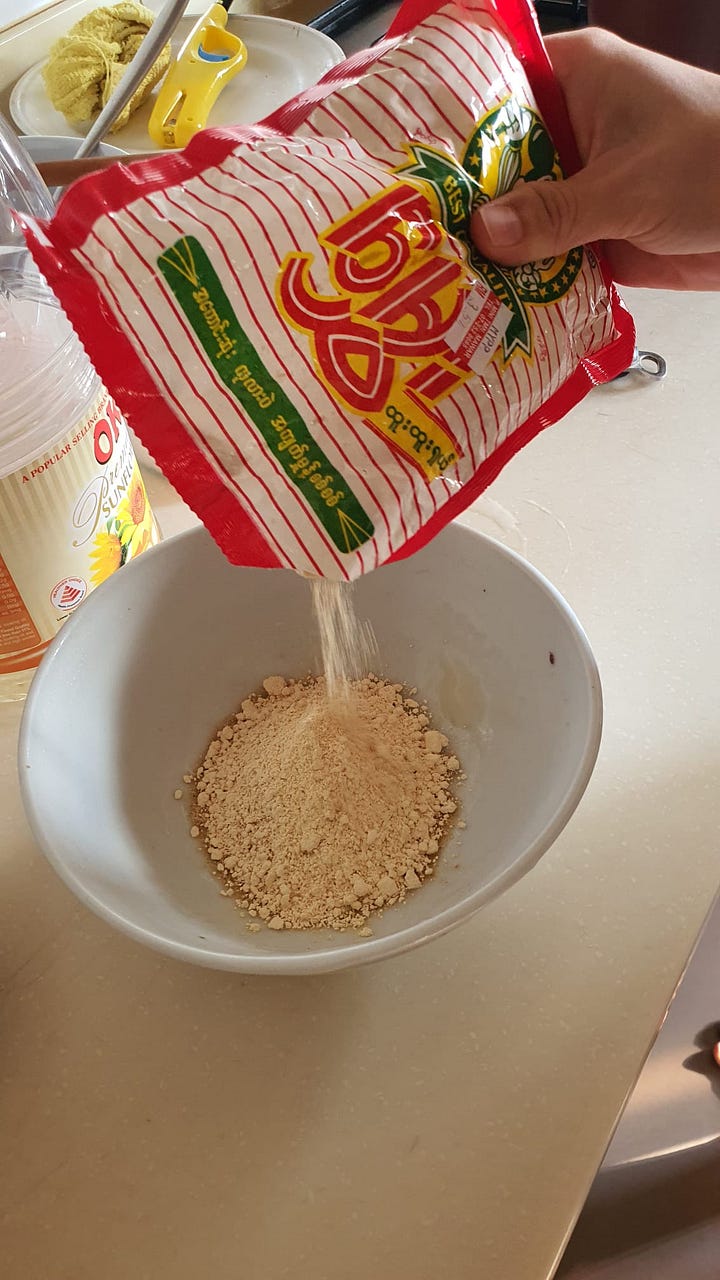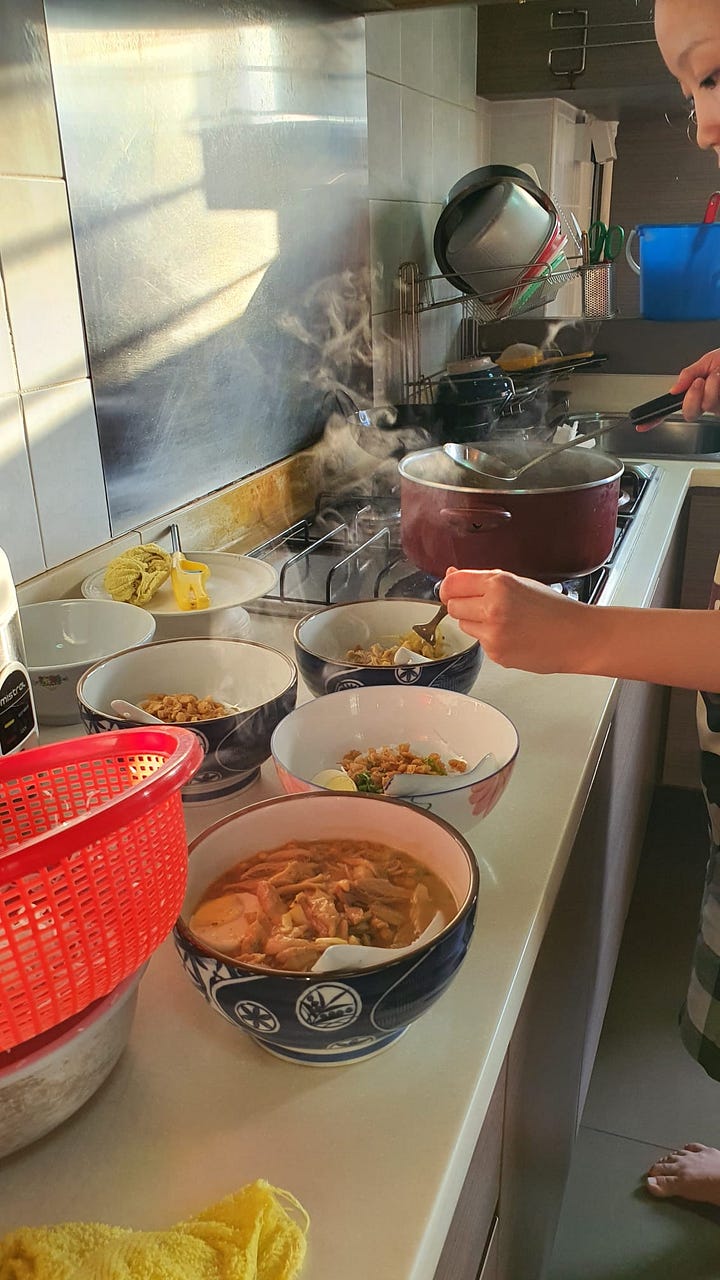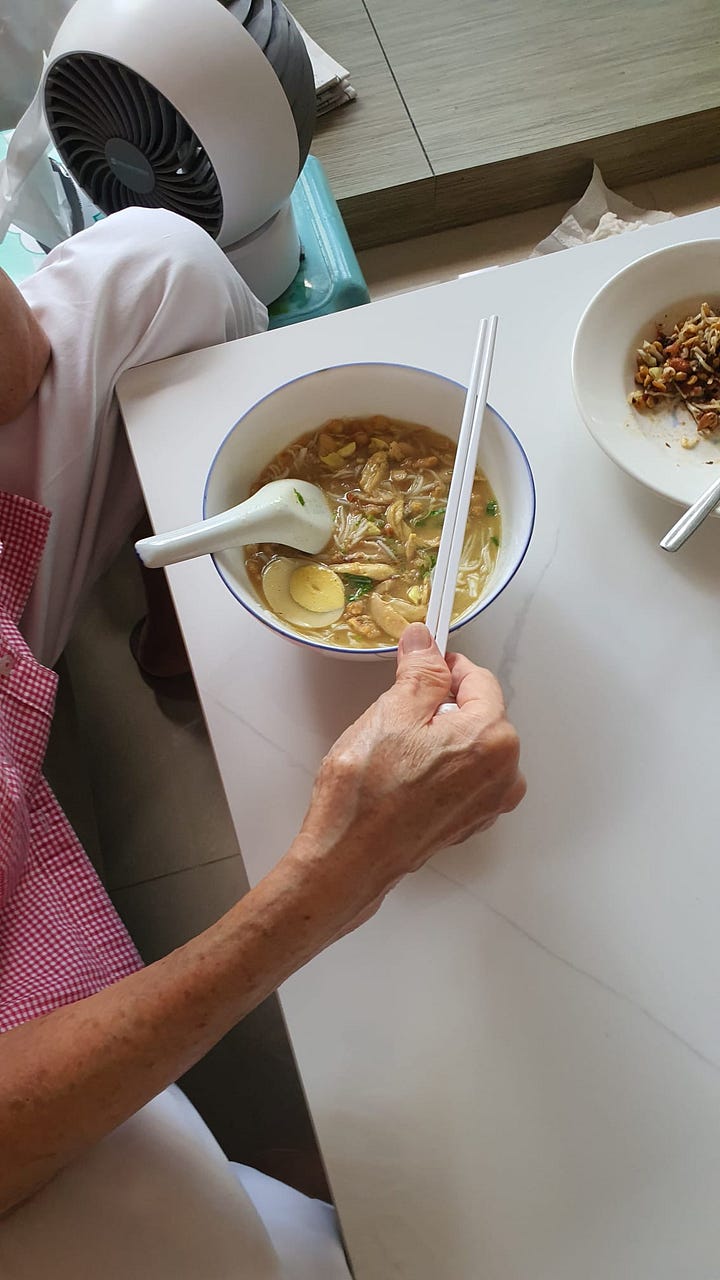✨ Welcome to Singapore Noodles, a newsletter dedicated to celebrating Asian culinary traditions and food cultures. Every Monday, you’ll be receiving a tasty mix of food history, stories, and recipes straight in your inbox. Archived recipes and other content can be found on the index. This newsletter is 100% reader-funded; each paid subscription supports the writing and research that goes into the newsletter, pays guest-writers, and gives you access to all content and recipes. Thank you for being here and enjoy this week’s post. ✨
I’ve been working on a third cookbook and, over the past month, I’ve been lucky to have spent time with other women in their kitchens in Singapore. They aren’t necessarily all my mother’s or grandmother’s age. Some are only in their 30s but, despite this, the daily ritual of cooking for themselves and their families has gifted them with an enviable grace and ease in the kitchen. The word that comes to mind when I regard their approach to cooking is honesty, which to me isn’t really a standalone virtue, but rather an umbrella word that encapsulates notions of frugality, simplicity, and efficiency.
A mother whom I’d visited taught me to make chapati with just atta (whole wheat flour) and water. The dough is unsalted as the bread, like rice, is served as a companion for flavourful sides. There’s no dab of butter, drizzle of oil, or even resting time as is recommended by so many recipes, and yet each round — rolled on an elevated wooden board in a continuous motion — was perfect in its shape and puffed magnificently when set upon a flame. Another auntie, who lived in one of Singapore’s most affluent neighbourhoods and clearly experienced no lack, used hands to get every last bit of chutney from the blender; this level of thrift and economy is something you’d be hard-pressed to find in many restaurant kitchens. In my own aunt’s home, I was given a masterclass on killing and dispatching live mud crabs. A former hawker with zero tolerance for bullshit, she demonstrated the futility of online advice to put the crabs to sleep in the freezer with one thwack of her cleaver — the blow to the underside of the crab delivered instant death, with none of the struggle I’d imagined.
Unlike my other kitchen lessons, the one with my grandmother’s Burmese helper Tha Zin came completely unplanned. It was only by chance that I learnt that her family sells mohinga for a living in Myanmar, and she offered to show me how to do it when I expressed interest. I had envisioned something complicated — after all, mohinga is widely considered to be Myanmar’s national dish. But what was laid out on the kitchen counter was refreshingly simple: a small bowl of chopped garlic, some peeled shallots, bruised lemongrass, and a few additional ingredients from Peninsular Plaza (Singapore’s Little Mynamar). Of course, later when I made her chicken mohinga in my own home, I discovered that this appearance of ease has been hard-won by constant practice… in the same way that getting chapati to puff involves a multitude of unspoken intricacies.
Tha Zin’s family offers two different types of mohinga at their shop: fish (the traditional protein) and chicken. She taught me to make the latter. The night before, she had simmered chicken in water to make broth, and stripped the flesh off the bones before I arrived. Almost every culture has their own version of a chicken soup, but what makes Tha Zin’s version special are the seasonings of turmeric powder and black pepper (the spice duo that supposedly confers health benefits when used in tandem) and fragrant stalks of lemongrass which she had masterfully twisted into tight knots. But apart from the flavours, what intrigued me was her use of chickpea powder and toasted rice powder. These are ingredients that aren’t entirely foreign to me — I’ve used chickpea powder as a thickener in Burmese salads and key ingredient of chickpea “tofu”; and toasted rice powder as laab seasoning. But using them together as a means to add body to a soup, that’s a first. It only took 5 to 10 minutes for the once-watery broth to thicken; this barely perceptible viscosity is what allows it to cling onto the noodles without sacrificing lightness.






I’ve always loved the emphasis that Burmese food places on texture and this chicken noodle soup was no exception — the dal crackers offered a satisfying crunch that counteracted the whole shallots which had turned soft and slippery. My grandma and aunt who were new to Burmese food loved it. Back in the Netherlands, I made chicken mohinga to get the measurements down pat and having it this autumnal afternoon is a reminder that the most enjoyable meals are the ones that warm from the inside, and that please by way of taste rather from outward posturing or how intelligent they read on a menu. I’ve kept the recipe below faithful to Tha Zin’s version, with a few minor deviations.
Chicken Mohinga
Makes 4 servings





